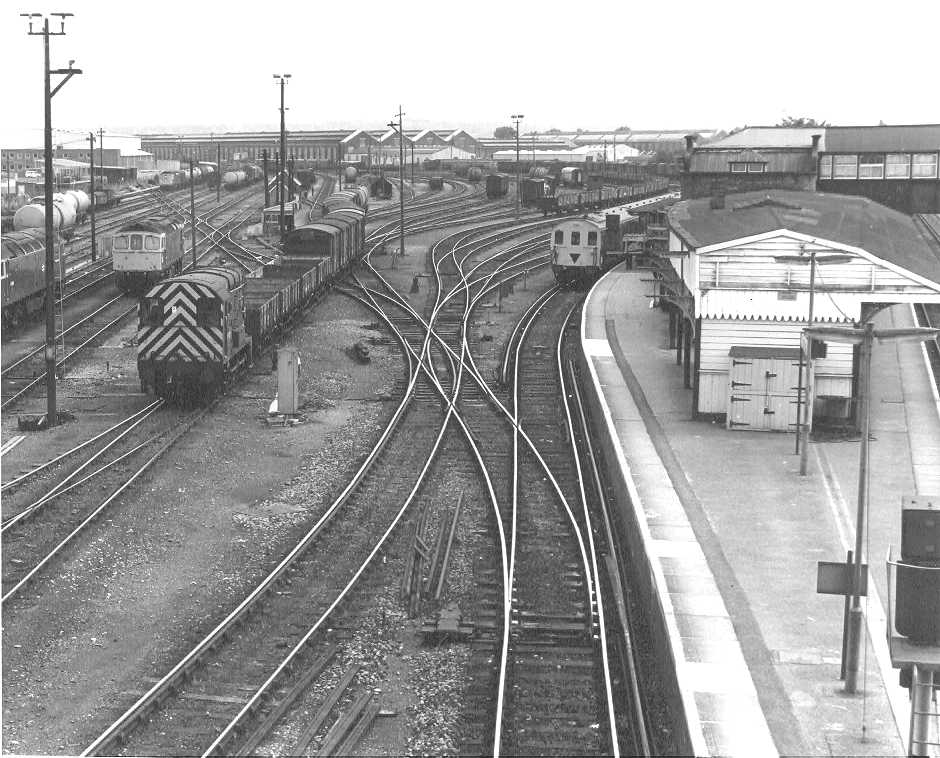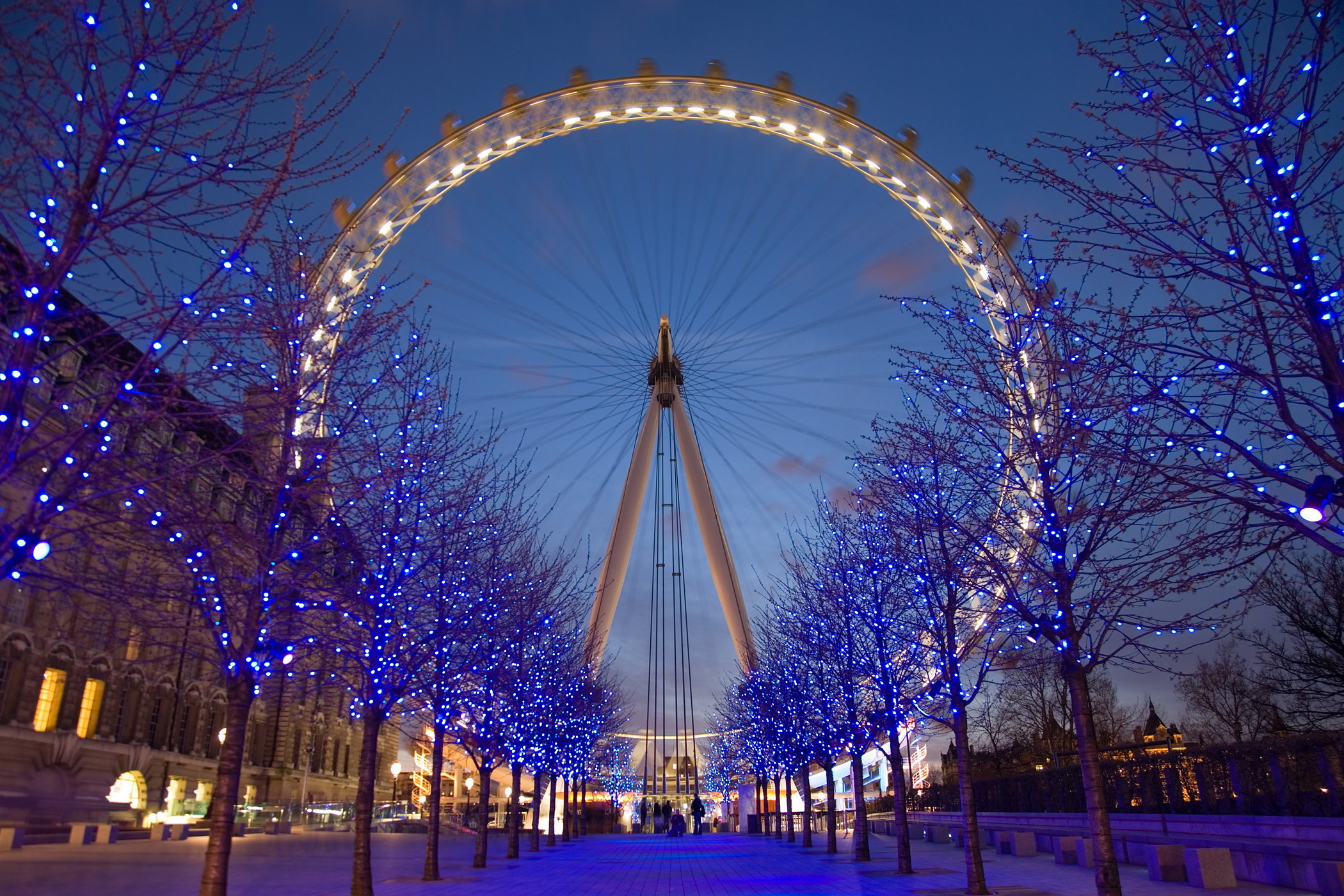|
Nine Elms Railway Station
Nine Elms railway station in the London district of Battersea was opened on 21 May 1838 as the London terminus of the London and Southampton Railway which on the same day became the London and South Western Railway. The building in the neoclassical style was designed by Sir William Tite. The station was inconveniently situated for travel to central London, with the necessity to complete the journey by road or by the steam boats connecting the station to points between Vauxhall and London Bridge. The station was closed to passengers from 11 July 1848 when the L&SWR opened its metropolitan extension, the Nine Elms to Waterloo Viaduct from Nine Elms to Waterloo (then called Waterloo Bridge Station), and the area adjacent to the station housed the L&SWR's carriage and wagon works until their relocation to Eastleigh Eastleigh is a town in Hampshire, England, between Southampton and Winchester. It is the largest town and the administrative seat of the Borough of Eastleigh, ... [...More Info...] [...Related Items...] OR: [Wikipedia] [Google] [Baidu] |
Nine Elms
Nine Elms is an area of south-west London, England, within the London Borough of Wandsworth. It lies on the River Thames, with Battersea to the west, South Lambeth to the south and Vauxhall to the east. The area was formerly mainly industrial but is now becoming more residential and commercial in character. It is dominated by Battersea Power Station, various railway lines and New Covent Garden Market. The Battersea Dogs & Cats Home is also in the area. Nine Elms has residential developments along the riverside, including Chelsea Bridge Wharf and Embassy Gardens, and also three large council estates: Carey Gardens, the Patmore Estate and the Savona. History Nine Elms Lane was named around the year 1645, from a row of elm trees bordering the road, though a path probably existed between York House and Vauxhall from the 1200s. In 1838, at the time of construction of the London and Southampton Railway, the area was described as "a low swampy district occasionally overflowed by ... [...More Info...] [...Related Items...] OR: [Wikipedia] [Google] [Baidu] |
Eastleigh Works
Eastleigh Works is a locomotive, carriage and wagon building and repair facility in the town of Eastleigh, in the county of Hampshire in England. History LSWR The London and South Western Railway (LSWR) opened a carriage and wagon works at Eastleigh in 1891. In 1903, the Chief Mechanical Engineer, Dugald Drummond, oversaw the construction of a large motive power depot in the town; replacing the existing maintenance and repair shops at Northam, Southampton. In January 1910, locomotive building was likewise transferred to the new workshops at Eastleigh from Nine Elms in London. Among the locomotives produced by the LSWR under Drummond at Eastleigh, were the S14 0-4-0 and M7 0-4-4 tank engines, the P14 and T14 4-6-0, and D15 4-4-0, classes. Following the appointment of Robert Urie as Chief Mechanical Engineer in 1912, the works were responsible for the construction of the H15, S15, and N15 (King Arthur) 4-6-0 classes, and the G16 4-8-0, and H16 4-6-0 tank engines. So ... [...More Info...] [...Related Items...] OR: [Wikipedia] [Google] [Baidu] |
Former London And South Western Railway Stations
A former is an object, such as a template, gauge or cutting die, which is used to form something such as a boat's hull. Typically, a former gives shape to a structure that may have complex curvature. A former may become an integral part of the finished structure, as in an aircraft fuselage, or it may be removable, being using in the construction process and then discarded or re-used. Aircraft formers Formers are used in the construction of aircraft fuselage, of which a typical fuselage has a series from the nose to the empennage, typically perpendicular to the longitudinal axis of the aircraft. The primary purpose of formers is to establish the shape of the fuselage and reduce the column length of stringers to prevent instability. Formers are typically attached to longerons, which support the skin of the aircraft. The "former-and-longeron" technique (also called stations and stringers) was adopted from boat construction, and was typical of light aircraft built until ... [...More Info...] [...Related Items...] OR: [Wikipedia] [Google] [Baidu] |
Former Buildings And Structures In The London Borough Of Wandsworth
A former is an object, such as a template, gauge or cutting die, which is used to form something such as a boat's hull. Typically, a former gives shape to a structure that may have complex curvature. A former may become an integral part of the finished structure, as in an aircraft fuselage, or it may be removable, being using in the construction process and then discarded or re-used. Aircraft formers Formers are used in the construction of aircraft fuselage, of which a typical fuselage has a series from the nose to the empennage, typically perpendicular to the longitudinal axis of the aircraft. The primary purpose of formers is to establish the shape of the fuselage and reduce the column length of stringers to prevent instability. Formers are typically attached to longerons, which support the skin of the aircraft. The "former-and-longeron" technique (also called stations and stringers) was adopted from boat construction, and was typical of light aircraft built until the a ... [...More Info...] [...Related Items...] OR: [Wikipedia] [Google] [Baidu] |
Railway Stations In Great Britain Closed In 1848
Rail transport (also known as train transport) is a means of transport that transfers passengers and goods on wheeled vehicles running on rails, which are incorporated in tracks. In contrast to road transport, where the vehicles run on a prepared flat surface, rail vehicles (rolling stock) are directionally guided by the tracks on which they run. Tracks usually consist of steel rails, installed on sleepers (ties) set in ballast, on which the rolling stock, usually fitted with metal wheels, moves. Other variations are also possible, such as "slab track", in which the rails are fastened to a concrete foundation resting on a prepared subsurface. Rolling stock in a rail transport system generally encounters lower frictional resistance than rubber-tyred road vehicles, so passenger and freight cars (carriages and wagons) can be coupled into longer trains. The operation is carried out by a railway company, providing transport between train stations or freight customer facilit ... [...More Info...] [...Related Items...] OR: [Wikipedia] [Google] [Baidu] |
London & South Western Railway
The London and South Western Railway (LSWR, sometimes written L&SWR) was a railway company in England from 1838 to 1922. Originating as the London and Southampton Railway, its network extended to Dorchester and Weymouth, to Salisbury, Exeter and Plymouth, and to Padstow, Ilfracombe and Bude. It developed a network of routes in Hampshire, Surrey and Berkshire, including Portsmouth and Reading. The LSWR became famous for its express passenger trains to Bournemouth and Weymouth, and to Devon and Cornwall. Nearer London it developed a dense suburban network and was pioneering in the introduction of a widespread suburban electrified passenger network. It was the prime mover of the development of Southampton Docks, which became an important ocean terminal as well as a harbour for cross channel services and for Isle of Wight ferries. Although the LSWR's area of influence was not the home of large-scale heavy industry, the transport goods and mineral traffic was a major activity, an ... [...More Info...] [...Related Items...] OR: [Wikipedia] [Google] [Baidu] |
Clapham Common Railway Station
Clapham Common was a railway station in Clapham. When open, it was located between and stations. The station was opened by the London and South Western Railway on the 21 May 1838 as Wandsworth when the company opened its line from to . Renamed in 1846 it closed on 2 March 1863 when was opened in its place. The station was close to the West End of London and Crystal Palace Railway The West End of London and Crystal Palace Railway (WELCPR) was an early railway company in south London between Crystal Palace station and Wandsworth, which was opened in 1856. The line was extended in 1858 to a station at Battersea Wharf near t ...'s New Wandsworth station located on a separate line, with both stations being open between 1858 and 1863 before being replaced by a combined station at Clapham Junction. References Disused railway stations in the London Borough of Wandsworth Former London and South Western Railway stations Railway stations in Great Britain opened ... [...More Info...] [...Related Items...] OR: [Wikipedia] [Google] [Baidu] |
New Covent Garden Market
New Covent Garden Market in Nine Elms, London, is the largest wholesale fruit, vegetable and flower market in the United Kingdom. It covers a site of and is home to about 200 fruit, vegetable and flower companies. The market serves 40% of the fruit and vegetables eaten outside of the home in London, and provides ingredients to many of London's restaurants, hotels, schools, prisons, hospitals and catering businesses. The Flower Market, which offers flowers, plants, foliages, sundries and interior decorations from the UK and from around the globe, is visited by 75% of florists in London, many of whom place morning orders and return to restock during the day. The Flower Market wholesalers are open from 04:00 to 10:00 Monday to Saturday and the Fruit & Vegetable Market wholesalers trade from around 00:00 – 06:00 Monday to Saturday. There is a £5 entry fee for visitors driving to the market. The nearest London Underground stations are Battersea Power Station and Nine Elms, bo ... [...More Info...] [...Related Items...] OR: [Wikipedia] [Google] [Baidu] |
Nine Elms Locomotive Works
Nine Elms Locomotive Works were built in 1839 by the London and South Western Railway (LSWR) adjoining their passenger terminus near the Vauxhall end of Nine Elms Lane, in the district of Nine Elms in the London Borough of Battersea. They were rebuilt in 1841 and remained the principal locomotive carriage and wagon workshops of the railway until closure in stages between 1891 and 1909. Thereafter a large steam motive power depot remained open on the site until 1967, serving Waterloo railway station. Original works The original locomotive, carriage and wagon workshops were built by the London and South Western Railway (LSWR) adjoining their original passenger terminus near the Vauxhall end of Nine Elms Lane in 1839, but suffered a disastrous fire in March 1841. They were rebuilt and from 1843 were used to construct over one hundred new locomotives for the company, to the designs of John Viret Gooch and Joseph Hamilton Beattie. Second works Within twenty years of their original con ... [...More Info...] [...Related Items...] OR: [Wikipedia] [Google] [Baidu] |
London Borough Of Lambeth
Lambeth () is a London borough in South London, England, which forms part of Inner London. Its name was recorded in 1062 as ''Lambehitha'' ("landing place for lambs") and in 1255 as ''Lambeth''. The geographical centre of London is at Frazier Street near Lambeth North tube station, though nearby Charing Cross on the other side of the Thames in the City of Westminster is traditionally considered the centre of London. History Origins Lambeth was part of the large ancient parish of Lambeth St Mary, the site of the archepiscopal Lambeth Palace, in the hundred of Brixton in the county of Surrey. It was an elongated north–south parish with of River Thames frontage opposite the cities of London and Westminster. Lambeth became part of the Metropolitan Police District in 1829. It remained a parish for Poor Law purposes after the Poor Law Amendment Act 1834, and was governed by a vestry after the introduction of the Metropolitan Board of Works in 1855. Borough origins U ... [...More Info...] [...Related Items...] OR: [Wikipedia] [Google] [Baidu] |






